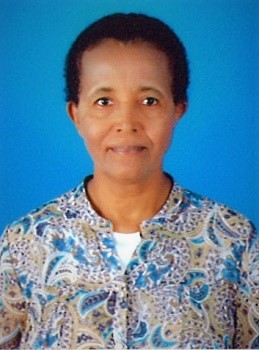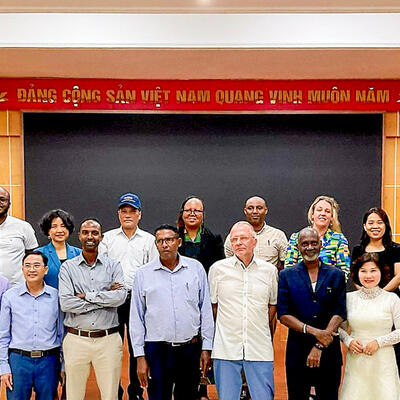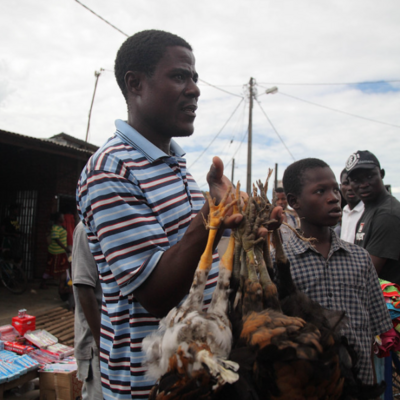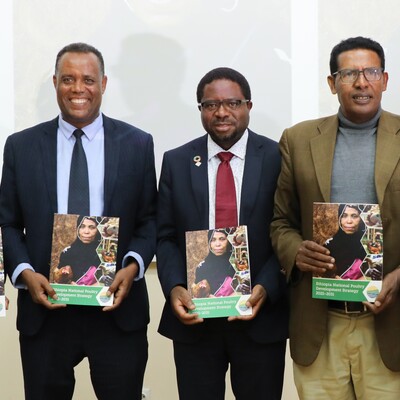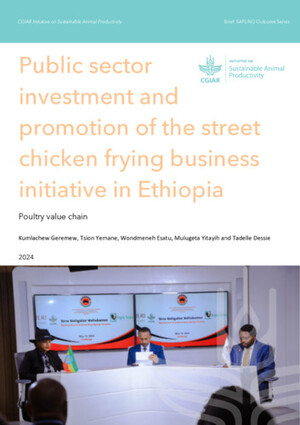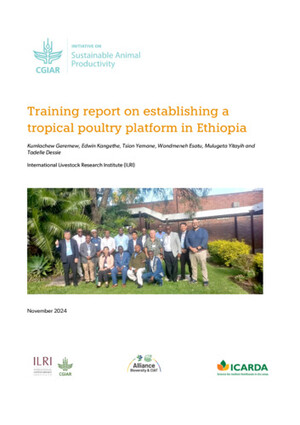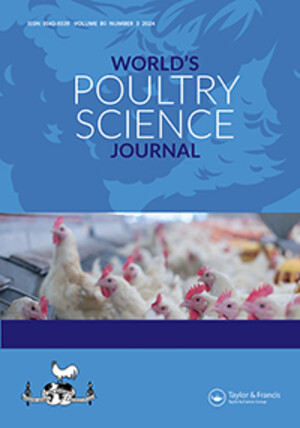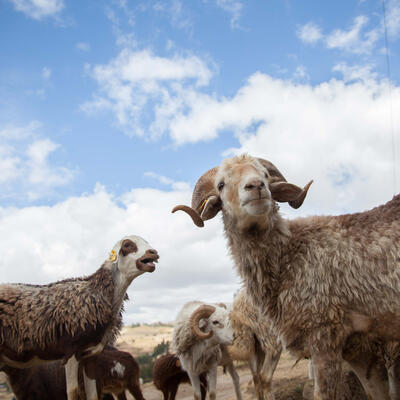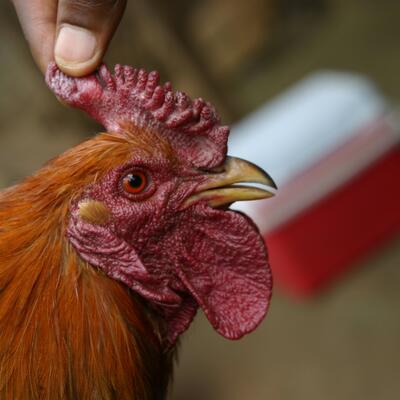
Voices on chicken genetics: Improved chicken farming is a pathway to economically empowered women and households
Felekech Lemecha works as subnational coordinator for the African Chicken Genetic Gains (ACGG) Project in Oromia, Ethiopia. The following is a summary of an interview that presents her work in the project; it is part of a series of portraits of key people in the project.
Please describe your background for us
I have a PhD degree in tropical animal production from the University of Kasetsart in Bangkok, Thailand, and an MSc degree in animal production from the University of Aberdeen, United Kingdom. I started work as a livestock extension expert before working for four years with the Ministry of Agriculture. Later, I joined the former Oromia Region Agricultural Research Desk, under the Oromia Agricultural Development Bureau, in 1996, as livestock researcher before joining the Oromia Agricultural Research Institute (my current position) in 2004. I have been involved in dairy, beef, poultry, animal feed resources, animal health, apiculture and fisheries research for the past 21 years.
What unique experience do you bring to the project?
My previous experience in livestock extension work has helped me in promoting ACGG project activities such as innovation platform meetings, and convincing the stakeholders and partners we work with to establish a strong foundation for addressing different challenges in the chicken value chain.
What is you role in ACGG and what are you currently working to accomplish?
My role, which started from the selection of participating zones, is coordinating and organizing all activities of the project in the four ACGG zones in the Oromia region. This includes sites/villages selection for the baseline survey, recruitment of enumerators for baseline and on-farm data collection, and selecting and training data collectors and farmers participating in the project. I am also responsible for overseeing on-farm chicken research data collection, organizing and continuous follow up of chicken distribution, supervising field data collectors and the data collection process and periodical reporting of the project activities to respective bodies.
Currently, on-going project activities include continuous follow up of on-farm data collection and establishing community innovation platforms.
What about your role do you find most meaningful or engaging?
For me what has been most meaningful about the project has been its focus on women empowerment and poor households. The commitment to pull women and poor households from poverty by involving them in chicken production has the potential to transform their lives and livelihoods.
What is the next piece of work you are focusing on right now in ACGG?
I am working on establishing fully functional community innovation platforms (CIPs) in 18 villages in Oromia. I believe that the CIPs are key pillars we can utilize to address challenges that occur at the grass-roots level in the chicken value chain so that we can improve poultry production.
What are some of the most intriguing or innovative research question that you are currently exploring and/or want to explore in ACGG?
Many farmers lost chickens shortly after distribution due to diseases, even though they had paid and done everything required for their upkeep. These losses are having a negative effect on some households’ interest in chicken production. Thus, if I get adequate budget, I will explore the correlation between distribution times and specific occurrences of diseases. This will help me design preventive or control methods, in collaboration with veterinarians in the project area, to minimize the problem.
What are you seeing as unique in your region?
In my region, in most low income generating agricultural activities, such as traditional dairy production, women play a major role in managing and controlling the income they generate. But when the production and productivity of the animals improves through the use of modern technologies, the income from these activities increases and men tend to take over the control and management of the generated income. I believe this will not happen in the ACGG project as strong awareness creation work has been done on women empowerment that will hopefully create, before the project phases out, strong and empowered women and households.
Why does this project matter and what gets you excited about it?
The ACGG project has emphasized women’s empowerment by, initially, targeting women-headed households and focusing on full integration of gender in all activities. Moreover, continuous community awareness creation on gender is showing the women involved in chicken production that they can play an important role in income generation, economic development and improving household nutritional status. This is exciting to me because I believe our work will contribute to attitude change towards the role of women in chicken production in the project area which will influence neighbouring villages and beyond.
What about the project causes concern for you and how can it be addressed?
The lack of feed supplement is a major concern for households that have already received the chickens. Before the chickens were distributed farmers were given training on formulating chicken feed supplements from the locally available ingredients to minimize chicken feeding problem. But most have not been able to achieve the nutritional feed requirements since the availability of some of the ingredients is seasonal or they are expensive. I think we need to closely work with the youth associations of the local government that are involved in chicken feed supplement business. This would help us to minimize the critical feed supplement shortages that currently exist in all project areas of the region.
What do you foresee as the lasting impact of ACGG?
Through the use of highly adaptive and productive chicken breeds, I see economically empowered women and households. I also see improved chicken production practice flourishing all over Ethiopia.
Any other thought you want to share?
I think that the project should also give timely and due emphasis for indigenous chicken genetic-pool conservation.





